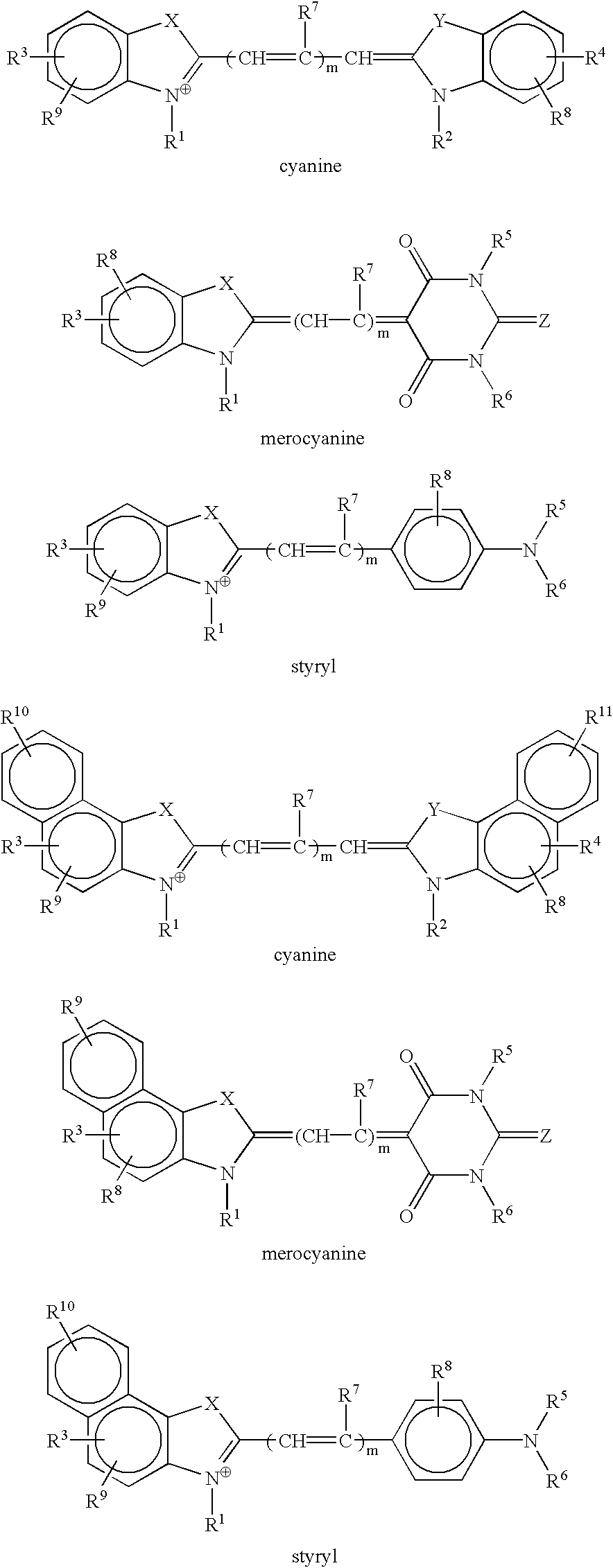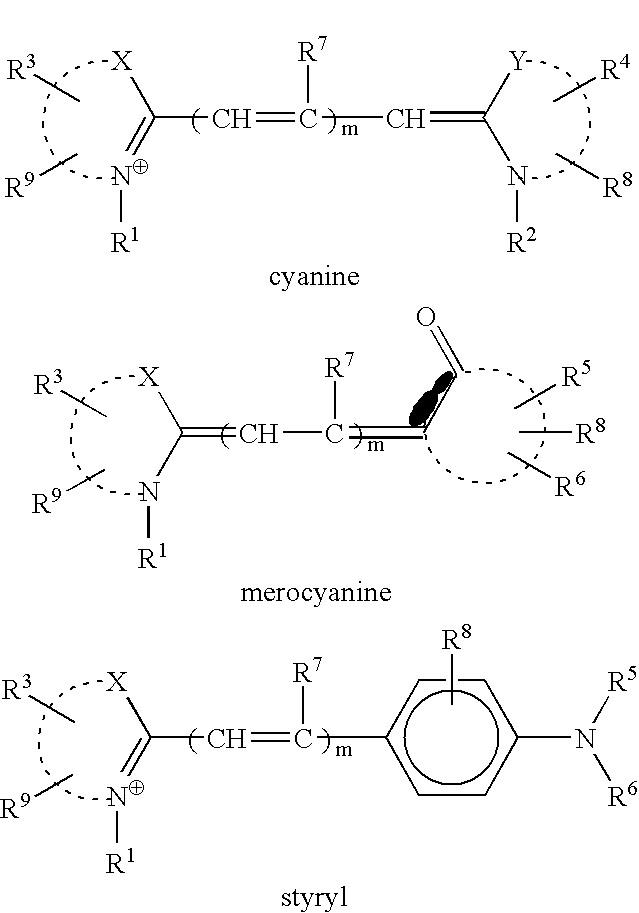Fluorescent nucleotides
a fluorescence nucleotide and fluorescence technology, applied in the field of fluorescence nucleotides, can solve the problems of insufficient sensitivity and specificity of detection methods using enzymes, complicated handling of radioisotopes, and insufficient use of radioisotopes for a limited time, and achieve the effect of efficient labeling of nucleic acids
- Summary
- Abstract
- Description
- Claims
- Application Information
AI Technical Summary
Benefits of technology
Problems solved by technology
Method used
Image
Examples
examples
[0076]The structures of the compounds (Compounds 1–8) synthesized and used in examples are shown below.
[0077]
example a
Synthesis of Compound 1 to 4
[0078]The compounds used herein were synthesized from 2,3,3-trimethyl indolenine derivative as a source material which was synthesized from commercially available 4-substituted aniline derivative (4-chloroaniline, 4-amino-benzenesulfonamide) according to the method of Fisher et al (E. Fisher, O. Hess, Berichte, 17:559(1883).
(Synthesis of Compound 1)
[0079]A large excess amount of ethyl iodine was added to 9.5 g (0.04 mol) of 2,3,3-trimethyl indolenine-5-sulfonamide, and the mixture was refluxed for 24 hours. After removing excess ethyl iodine by decantation, and washing with acetone repeatedly, N-ethyl-2,3,3-trimethyl indolenium-5-sulfonamide iodine salt (Compound A) was obtained. The amount was 6.8 g and the yield was 42%
[0080]6-Bromohexanoic acid (9.8 g, 0.05 mol) and 1,2-dichlorobenzene (100 ml) were added to 2,3,3-trimethyl indolenine-5-sulfonamide (9.5 g, 0.04 mol), and the mixture was heated at 110° C. for 12 hours. After cooling down, the reaction s...
example b
Synthesis of Compounds 5 to 8
[0087]By using indolenine cyanine of Compounds 1 to 4, dUTP-conjugates of each Compound (Compounds 5 to 8) were synthesized.
(Synthesis of Compound 5)
[0088]1 ml of acetonitrile and 2 ml of 0.1 M MES buffer were added to 5.75 mg (1.0 parts) of Compound 1 to dissolve it, and then 2.20 mg (1.2 parts) of WSC hydrochloride and 2.52 mg (1.2 parts) of Sulfo-NHS were added thereto followed by stirring at room temperature for 30 minutes. After adding thereto 2.2 mg of aminoallyl-dUTP (Sigma) dissolved in 200 μl of 0.1 M MES buffer, a reaction was carried out at room temperature overnight. After adding 100 μl of 1 M Tris buffer (pH 7.5) and stopping the reaction, the resultant reaction solution was absorbed on a column in which 8 g of ODS silica (YMC-ODS-AQ 120A) was previously filled, and was eluted with 30% methanol aqueous solution. After the eluant is concentrated, it was further purified by intermediate pressure preparative chromatography (YAMAZEN Ultrapack OD...
PUM
| Property | Measurement | Unit |
|---|---|---|
| Ratio | aaaaa | aaaaa |
| Fluorescence | aaaaa | aaaaa |
Abstract
Description
Claims
Application Information
 Login to View More
Login to View More - R&D
- Intellectual Property
- Life Sciences
- Materials
- Tech Scout
- Unparalleled Data Quality
- Higher Quality Content
- 60% Fewer Hallucinations
Browse by: Latest US Patents, China's latest patents, Technical Efficacy Thesaurus, Application Domain, Technology Topic, Popular Technical Reports.
© 2025 PatSnap. All rights reserved.Legal|Privacy policy|Modern Slavery Act Transparency Statement|Sitemap|About US| Contact US: help@patsnap.com



